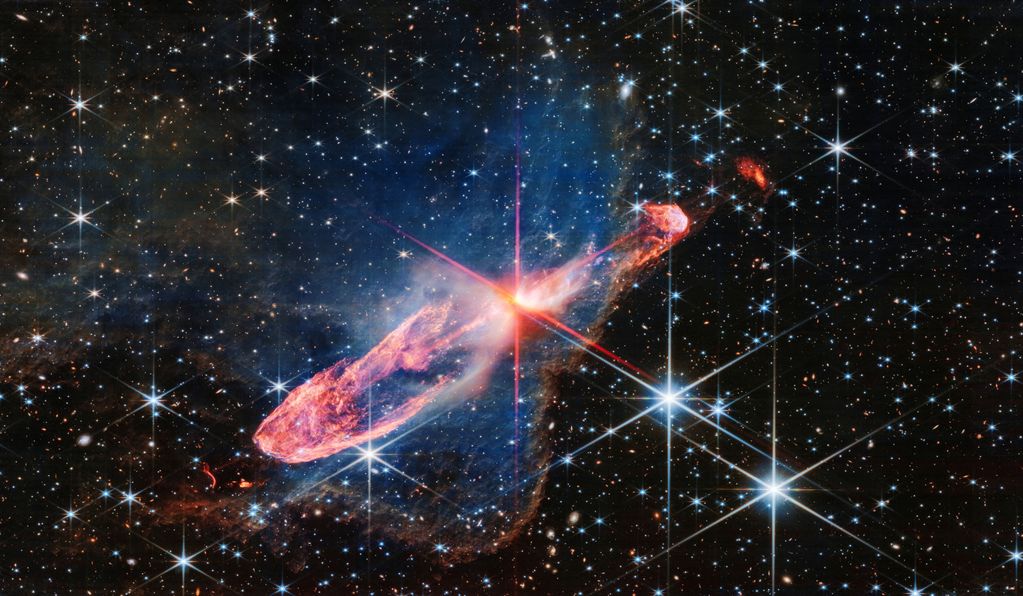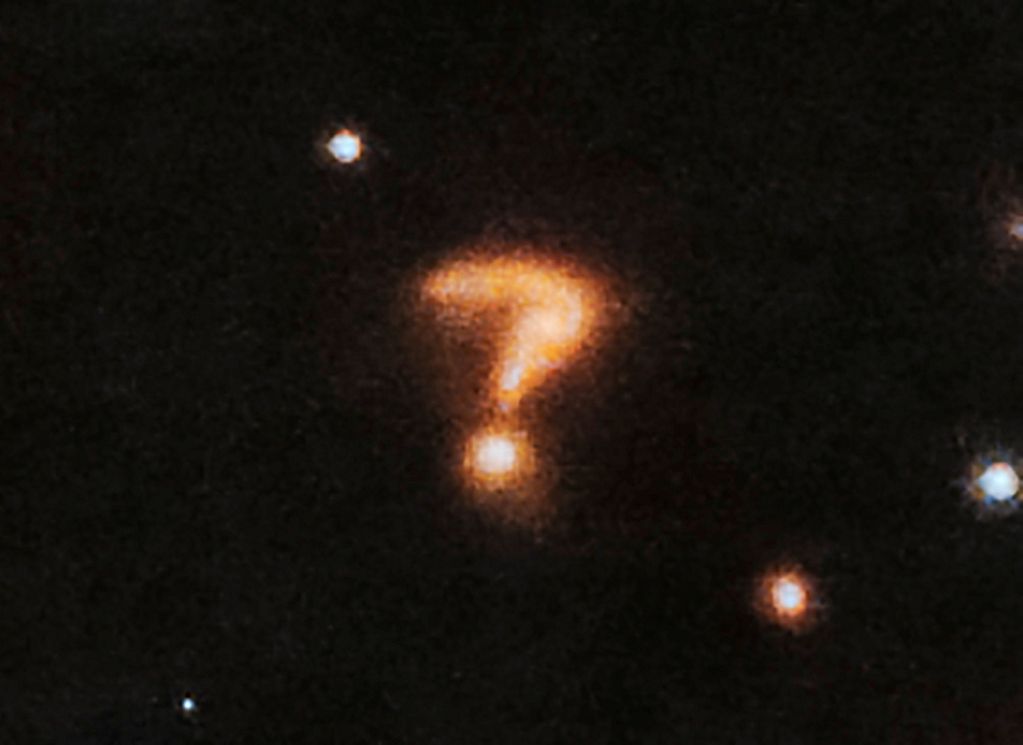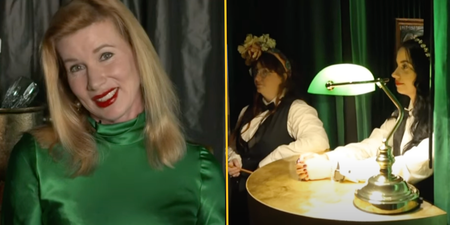I’m a big name in deep space.
You ever wake up and everything feels normal. Normal house, normal car, maybe you get the train to work, call into the pub later that night. And then… you see a picture from a telescope and enter an open mouthed existential crisis when you realise you’re essentially nothing at all but floating atoms in the middle of nowhere. Well, I just did.
The reason galaxies disrupted my peaceful ignorance was all because of this: the fact that the James Webb Telescope has just captured a bizarre looking galaxy which looks exactly like a question mark.
The telecope captured something which appears to resemble a question mark in the deepest darkest depths of space. The question mark is beside a pair of young stars called Herbig-Haro 46/47.

The James Webb Space Telescope team at the European Space Agency released the image alongside an even closer look, which shows the stars located just 1,470 light-years away from Earth in the Vela Constellation.
The stars are surrounded by a ‘disk’ of material which ‘feeds’ them as they continue to grow for quite literally millions of years. However it is what lurks below the stars which has captured most people’s attention and curiosity. A gigantic question mark floating around in the ether of the black abyss.
While to many the question mark is a terrifying metaphor for all they have and haven’t done, and for all that’s going wrong with the world, experts have a more logical explanation.

Matt Caplan, assistant professor of physics at Illinois State University, told Space.com: “The two distinct features could easily be merging galaxies in the background, with the upper part of the question mark being part of a larger galaxy getting tidally disrupted.”
He continued: “Given the colour of some of the other background galaxies, this doesn’t seem like the worst explanation. Despite how chaotic mergers are, double lobed objects with curvy tails extending away from them are very typical.”
Dr Stephen Wilkins, head of astronomy at the University of Sussex, explained to the Daily Mail: “However, just like clouds, if you look at enough of these, you’ll find some which look recognisable, and seeing a question mark in the universe is undeniably very cool.”
He added: “I am sorry to tell people it’s probably not a message to humanity – but it does show the amazing ability of this telescope to explore our universe as never seen before.”
Science always has to ruin the fun.
Related Links:
Mysterious object on Australian beach fell from space
OceanGate founder now wants to send people to least hospitable planet in the galaxy
There’s an Earth-like planet which humans could live on just 31 light-years away



















































